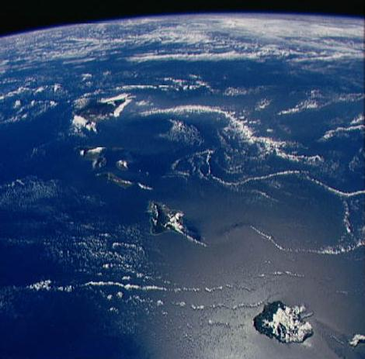
Introduction
The climate models previously reviewed predict short
and long-term changes in sea-surface temperature, rainfall, the El Niño
Southern Oscillation phenomenon and storm variability, and sea level
for the Pacific Basin. These changes have implications for Pacific inhabitants
and the entire world. Examples of impacts of past climate events include
the recorded El Niño’s of 1986-1987, 1991-1992, 1997-1998,
and 2002-2003. The
economic cost of the 1982-1983 El Niño at the time was estimated
to be over 8 billion U.S. dollars. The economic cost of Hurricane Katrina
(in 2005) is projected upwards of 70-80 billion U.S. dollars with approximately
1,300 people killed. Large-scale climate events, such as El Niño,
and large scale weather events, such as hurricanes, may both have their
impacts amplified by global climate change.
Future Impacts of Climate Change on Pacific Islands - Oahu, Hawaii
The islands of Hawaii are located in the Pacific Basin. The Pacific
Basin area is easily large enough to fit all the presently exposed land
surface area on Earth
(58 million square miles). In other words, the surface area of the Pacific
Basin is greater than the combined areas of North America, South America,
Europe, Asia, Africa, Greenland, and Antartica. Of the roughly 30,000
islands in the Pacific, the Hawaiian Island of Oahu is one of the most
developed, populated, and isolated as the nearest
continental land mass is over 2,400 miles away.
Climate change will play a significant role in the changes in temperature,
precipitation, sea level variations that the islands of Hawaii experience.
